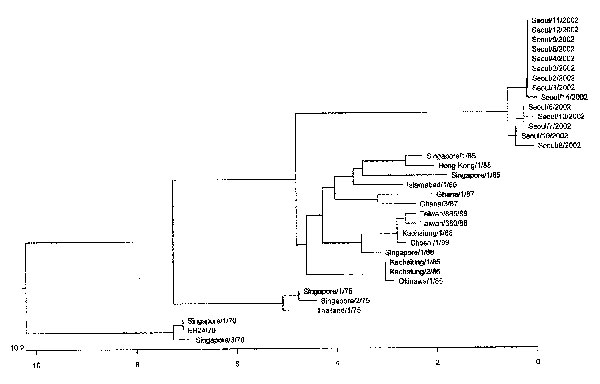Volume 9, Number 8—August 2003
Dispatch
Acute Hemorrhagic Conjunctivitis caused by Coxsackievirus A24 Variant, South Korea, 2002
Figure

Figure. Phylogenetic analyses of the 14 isolates of coxsackievirus A24 variant (CA24v) from the South Korean outbreak of acute hemorrhagic conjunctivitis, summer 2002. The entire protease 3C region (549 nucleotides) of CA24v was amplified by polymerase chain reaction and sequenced. The nucleotide sequences of this region of the 14 Korean isolates were compared with those of the strains reported from other Asian countries in previous outbreaks. The phylogenetic tree was constructed by the unweighted pairwise grouping method of the arithmetic average. (GenBank accession nos. for the 14 Korean isolates are AY216777–AY216790.)
Page created: December 22, 2010
Page updated: December 22, 2010
Page reviewed: December 22, 2010
The conclusions, findings, and opinions expressed by authors contributing to this journal do not necessarily reflect the official position of the U.S. Department of Health and Human Services, the Public Health Service, the Centers for Disease Control and Prevention, or the authors' affiliated institutions. Use of trade names is for identification only and does not imply endorsement by any of the groups named above.